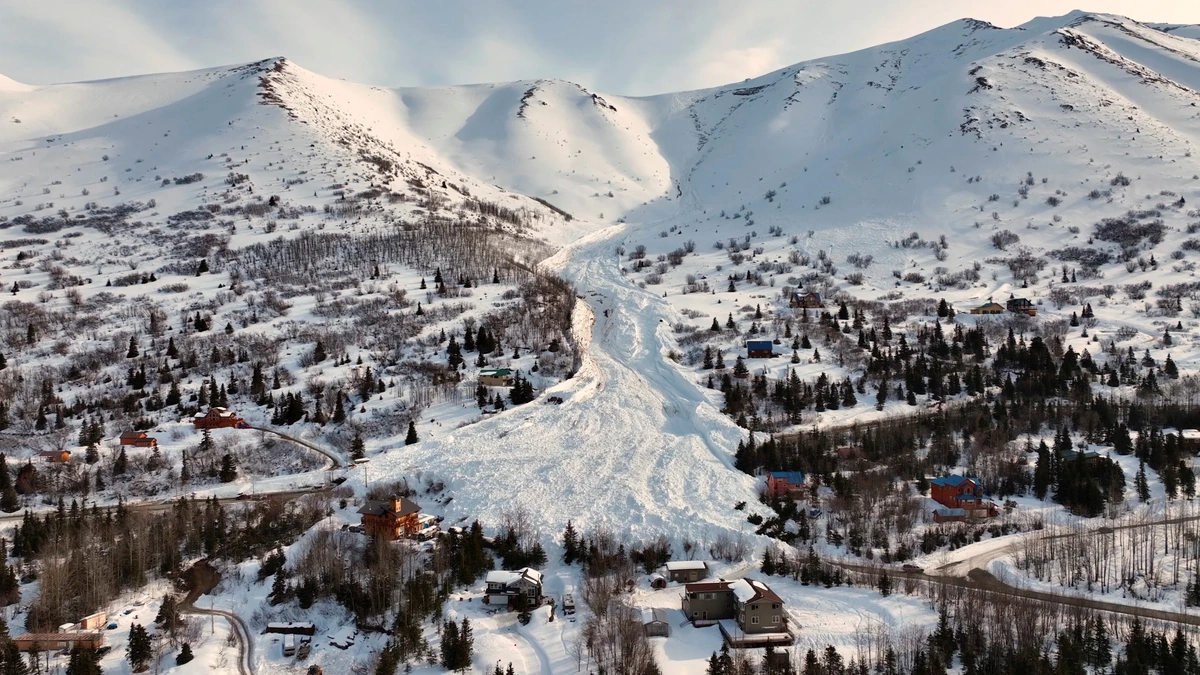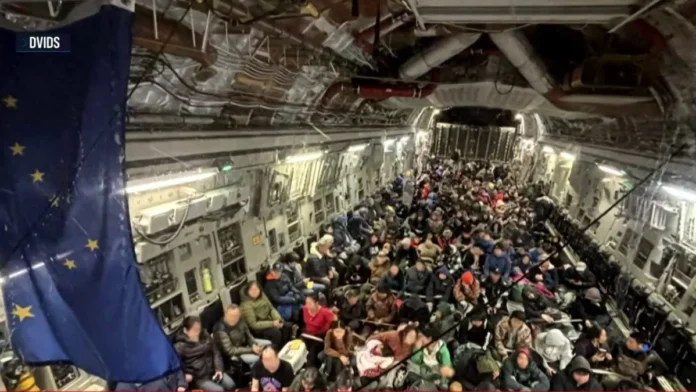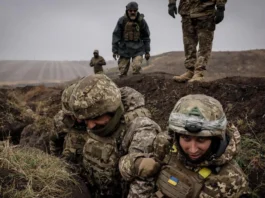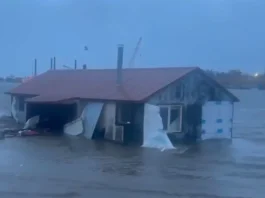Imagine your home, battered by relentless storms, the familiar coastline vanishing under rising floodwaters. Now, imagine the relief as the roar of a US Air Force plane signals rescue. This isn’t a movie scene; it’s the reality for hundreds in remote Alaskan coastal villages. But why did this happen, and what does it mean for the future of these communities? Let’s dive in, not just as news reporters, but as concerned citizens trying to understand the deeper implications.
The Alaskan Storm Crisis | More Than Just a Headline

The recent storm that pummeled Alaska’s western coast wasn’t just another weather event; it was a stark reminder of the increasing vulnerability of coastal communities to climate change. We’re talking about villages where access to the outside world is already limited, and where traditional ways of life are deeply intertwined with the land and sea. According to the National Weather Service, storm surges reached unprecedented levels, flooding homes, damaging infrastructure, and forcing residents to seek shelter. The Alaskan evacuation , orchestrated by the USAF, became a lifeline for those stranded and in dire need. But here’s the thing – this isn’t a one-off event. It’s part of a pattern.
How Climate Change Exacerbated the Disaster
Let’s be honest: Climate change isn’t some distant threat; it’s actively reshaping our world, and Alaska is on the front lines. Rising sea levels, fueled by melting glaciers and thermal expansion, make coastal communities more susceptible to flooding during storms. The thawing of permafrost, which acts as a natural foundation for buildings and infrastructure, further destabilizes the ground, making villages even more vulnerable. The increased frequency and intensity of storms are directly linked to warmer ocean temperatures. As one climate scientist put it, “What used to be a 50-year storm is now happening every five years.” The urgency of addressing climate change is no longer a debate; it’s a matter of survival for these Alaskan communities.
The USAF’s Role | A Logistical Lifeline
The United States Air Force played a critical role in the evacuation efforts . Deploying aircraft capable of operating in challenging conditions, the USAF transported hundreds of residents to safer locations. But it wasn’t just about moving people; it was about providing hope and reassurance during a time of crisis. What fascinates me is the logistical complexity involved in such an operation. Coordinating flights, providing medical support, and ensuring the safety of evacuees all require meticulous planning and execution. This operation demonstrates the importance of military readiness in responding to natural disasters and the critical role of theUSAFin humanitarian aid.
Rebuilding and Resilience | The Path Forward
So, what happens next? Rebuilding these villages will be a monumental task, requiring significant investment and community involvement. But it’s not just about rebuilding; it’s about building back better and with resilience in mind. This means incorporating climate-resilient infrastructure, such as elevated homes and improved drainage systems. It also means empowering local communities to adapt to the changing environment through education, training, and access to resources. The indigenous communities in these regions possess traditional knowledge about living in harmony with the land, and their wisdom is invaluable in shaping a sustainable future.
Long-Term Implications | A Warning for Coastal Regions Worldwide
The Alaskan storm and subsequent emergency response serves as a stark warning for coastal regions around the world. As climate change intensifies, more communities will face similar threats from rising sea levels, extreme weather events, and environmental degradation. What we learn from Alaska can inform strategies for adaptation and mitigation in other vulnerable areas. International cooperation, technological innovation, and a commitment to sustainable development are essential to protecting coastal communities and preserving their cultural heritage. A common mistake I see governments make is ignoring indigenous knowledge. The long-term survival of these villages hinges on understanding how rising sea levels, coastal erosion, and extreme weather impact their way of life. Ignoring their expertise is not an option.
Ultimately, the story of the Alaskan evacuation is a story of resilience, courage, and the enduring human spirit in the face of adversity. It’s a reminder that even in the most remote corners of the world, communities can come together to overcome challenges and build a brighter future. The USAF’s humanitarian efforts during this crisis highlights the importance of global cooperation. It is important for these villages to receive federal disaster assistance in order to recover.
FAQ Section
What caused the devastating storm in Alaska?
The storm was caused by a combination of factors, including a powerful weather system and unusually high sea temperatures, which fueled its intensity.
How many people were evacuated from the Alaskan coastal villages?
Hundreds of residents were evacuated from several villages along Alaska’s western coast.
What role did the US Air Force play in the evacuation?
The USAF provided critical transportation and logistical support, airlifting residents to safety and delivering essential supplies.
What are the long-term solutions for protecting Alaskan coastal communities from future storms?
Long-term solutions include investing in climate-resilient infrastructure, empowering local communities to adapt, and addressing the root causes of climate change.
How can I help the Alaskan communities affected by the storm?
You can donate to reputable relief organizations providing assistance to the affected communities and advocate for policies that support climate resilience.
Will insurance cover damages?
Homeowner’s insurance may cover some of the damage. However, flood insurance may be required to cover other damages.




